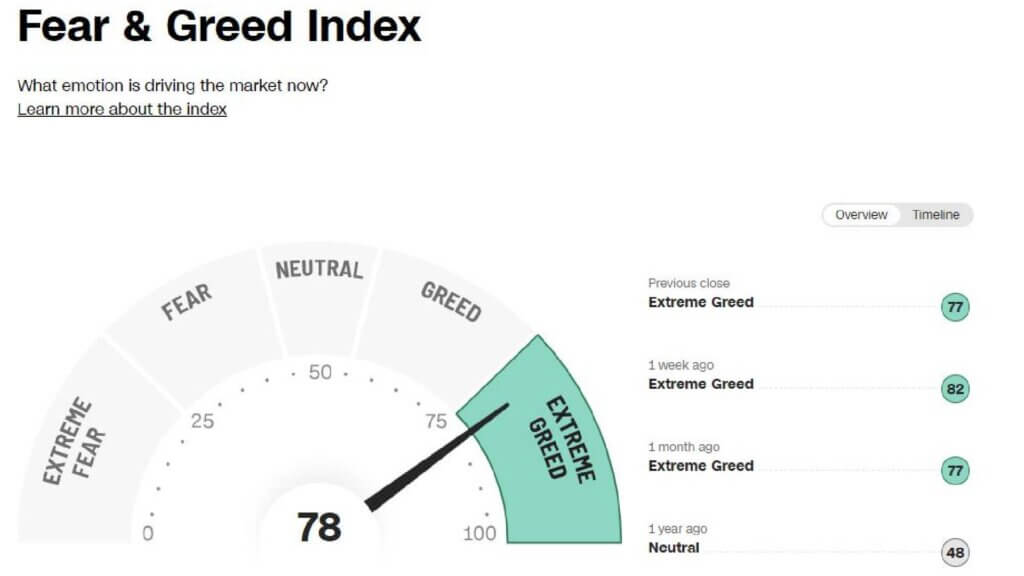The fear and greed index was developed by “CNN Money” to measure two primary emotions on a daily basis that influence how much investors are willing to pay for stocks. In theory, the index can be used to gauge whether the stock market is fairly priced.
How it Works
The index functions on the premise that excessive fear can result in stocks trading well below their intrinsic values; and that excessive greed can result in stocks being bid up far above what they should be worth. CNN studies 7 different factors to establish how much fear and greed there is in the market. Let’s take a look at the 7 factors below:
- Stock Price Strength (Calculating the number of stocks hitting 52-week highs versus those hitting 52-week lows)
- Market Momentum (Measuring the S&P 500 versus its 125-day moving average)
- Put and Call Options (How much do put options lag behind call options, signifying greed, or surpass them, indicating fear)
- Stock Price Breadth (Analyzing the trading volumes in rising stocks against declining stocks)
- Market Volatility (Measuring the 50-day moving average of the Chicago Board Options Exchange Volatility Index (VIX)).
- Junk Bond Demand (Gauging the appetite for higher risk strategies by measuring the spread between yields on investment-grade bonds and junk bonds)
- Safe Haven Demand (The difference in returns for stocks versus treasuries)
*Each of these 7 indicators is measured on a scale from 0 – 100, the index is computed by taking an equal-weighted average of each of them. A reading of 50 is deemed neutral while anything higher signals more greed than usual.
The index history shows that the fear and greed index has been a reliable indicator of a turn in equity markets in the past. For example, the index traded above 90 in January of 2020 before the Covid-19 pandemic when the S&P 500 was at all-time highs. By contrast, the index traded below 5 in March of 2020 as the pandemic hit North America and the S&P 500 sank to multi-year lows.
Most market participants agree that the fear and greed index can come in handy, provided that it’s not the only tool used to make investment decisions. For example, one might buy the dips when the index is showing extreme fear and one might not want to buy when the index is showing extreme greed. You can study the index for yourself by clicking here.
